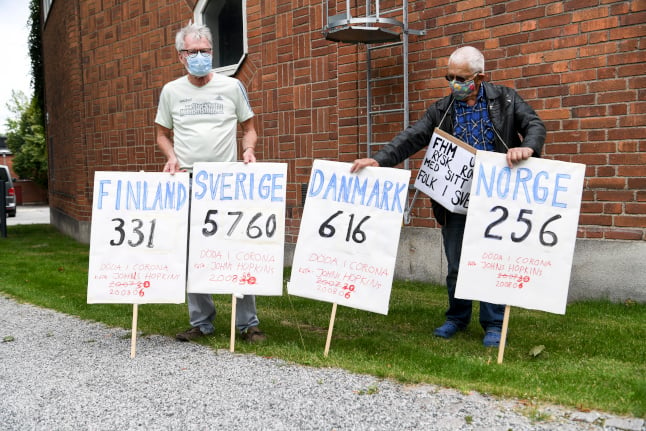“When we go sort of into the second phase, the rapid finding of what could be a potential cluster, is going to be crucial,” Tegnell said.
Rapid decline in cases
In Sweden’s elderly care homes (the source of many fatalities earlier this year), the number of new cases is thankfully still falling. But the concern is obv if the rise in infections among young adults who usually (but not always) get mild symptoms spreads to at-risk groups. pic.twitter.com/8fjpszFwbo
— Emma Löfgren (@ekjlofgren) August 6, 2020

A group of people protesting outside the Public Health Agency's building. Photo: Fredrik Sandberg/TT


 Please whitelist us to continue reading.
Please whitelist us to continue reading.
Member comments